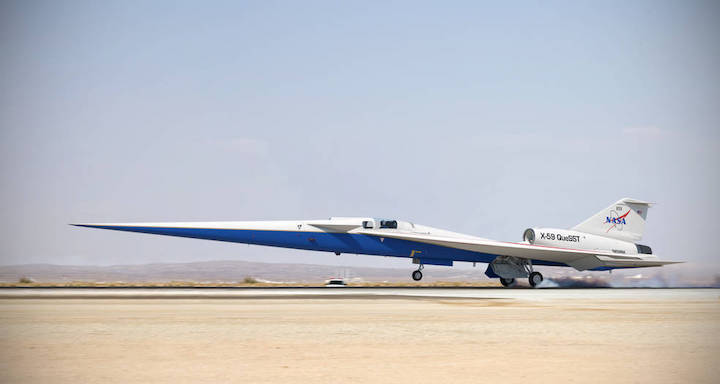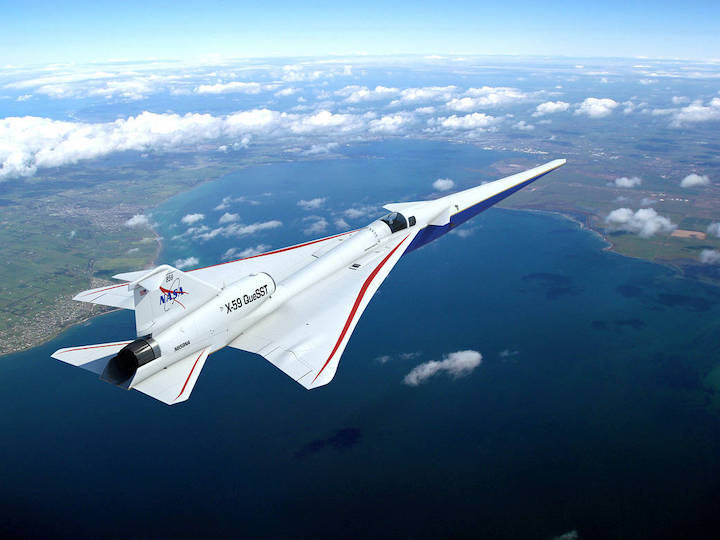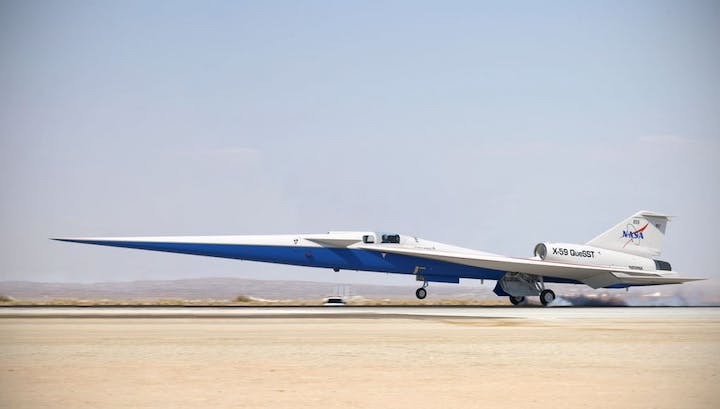17.12.2019

NASA’s first large scale, piloted X-plane in more than three decades is cleared for final assembly and integration of its systems following a major project review by senior managers held Thursday at NASA Headquarters in Washington.
The management review, known as Key Decision Point-D (KDP-D), was the last programmatic hurdle for the X-59 Quiet SuperSonic Technology (QueSST) aircraft to clear before officials meet again in late 2020 to approve the airplane’s first flight in 2021.
“With the completion of KDP-D we’ve shown the project is on schedule, it’s well planned and on track. We have everything in place to continue this historic research mission for the nation’s air-traveling public,” said Bob Pearce, NASA’s associate administrator for Aeronautics.
The X-59 is shaped to reduce the loudness of a sonic boom reaching the ground to that of a gentle thump, if it is heard at all. It will be flown above select U.S. communities to generate data from sensors and people on the ground in order to gauge public perception. That data will help regulators establish new rules to enable commercial supersonic air travel over land.
Construction of the X-59, under a $247.5 million cost-plus-incentive-fee contract, is continuing at Lockheed Martin Aeronautics Company’s Skunk Works factory in Palmdale, California.
Three major work areas are actively set up for building the airplane’s main fuselage, wing and empennage. Final assembly and integration of the airplane’s systems – including an innovative cockpit eXternal Visibility System – is targeted for late 2020.
Management of the X-59 QueSST development and construction falls under the Low Boom Flight Demonstratorproject, which is part of NASA’s Integrated Aviation Systems Program.
+++
NASA’s X-59 QueSST Airplane Takes Shape at Lockheed Martin Skunk Works

In the high desert of California, some of the most important aircraft in aviation history have been built and flown. NASA’s X-59 QueSST (short for Quiet SuperSonic Technology) is an experimental piloted aircraft designed to fly faster than sound without producing the annoying – if not alarming – sonic booms of previous supersonic aircraft. It is the latest craft to take shape at Skunk Works, a renowned Lockheed Martin division that for the past 76 years has used a unique approach to design and manufacturing that has produced the nation’s most advanced airplanes.
This artist's concept of NASA’s QueSST jet reflects the airplane’s final configuration following years of research and design engineering. The jet is now under construction by Lockheed Martin at the company’s Skunk Works facility in Palmdale, California.
Image Credit: Lockheed Martin
Quelle: NASA
----
Update: 13.01.2020
.
X-59 supersonic research aircraft cleared for final assembly

NASA’s first large scale, piloted X-plane in more than three decades is cleared for final assembly and integration.
According to NASA, the management review, known as Key Decision Point-D (KDP-D), was the last programmatic hurdle for the X-59 Quiet SuperSonic Technology (QueSST) aircraft to clear before officials meet again in late 2020 to approve the first flight in 2021.
“With the completion of KDP-D we’ve shown the project is on schedule, it’s well planned and on track. We have everything in place to continue this historic research mission for the nation’s air-traveling public,” said Bob Pearce, NASA’s associate administrator for Aeronautics.
The X-59 is shaped to reduce the loudness of a sonic boom reaching the ground to that of a gentle thump, if it is heard at all. It will be flown above select U.S. communities to generate data from sensors and people on the ground in order to gauge public perception. That data will help regulators establish new rules to enable commercial supersonic air travel over land.
Construction of the X-59, under a $247.5 million cost-plus-incentive-fee contract, is continuing at Lockheed Martin Aeronautics Company’s Skunk Works factory in Palmdale, California.
Quelle: ukdj

